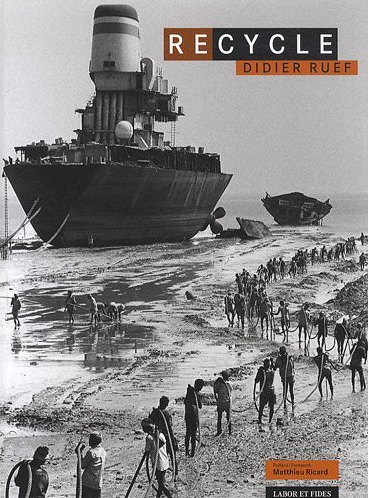Excerpts from Matthieu Ricard’s preface to Didier Ruef’s « Recycle » de Didier Ruef)
From prehistoric tools to the flooding of waste
Some animals have learned to use and even shape rudimentary tools. Homo habilis generalized tool making and Homo sapiens has raised this production to a level of sophistication barely thinkable. The number, complexity and power of these tools are such that the impact of their use on the lives of humans and other living species on the planet have increased exponentially with respect to what man’s bare hands could have accomplished.
(
These tools have allowed man to construct cathedrals, sail the seas and send rockets to the moon. They helped me when I waded in the waters of Lake Kokonor in north-eastern Tibet, the only human being for miles around, to chat with my then 85 year old mother who was sitting quietly in a countryside of the southwest of France, and this thanks to a small metal contraption full of complicated mechanisms which in the Middle Ages would have certainly made me pass for a sorcerer and risk being burned at the stake.
The manufacture of a tool consisted at first in modification and assembly of natural objects to help man makes things better and faster than with his bare hands. When no longer useful, these tools and the products which were made from them, were discarded and returned to nature. Millennia later, only objects made of hard materials such as stone have left long lasting traces.
Then man learned to make fire, to extract metals from crude ores, to mix substances with each other and thereby produce compounds with new properties. These are then abandoned in the environment and contribute to change it in various ways, often unpredictably and sometimes with harmful consequences in the short or long term.
(To be continued)